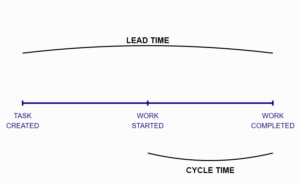Table of Contents
1 Understanding Lead Time: A Comprehensive Guide
1.1 Introduction
In the fast-paced world of supply chain management, manufacturing, and project management, the concept of lead time plays a crucial role. Lead time is a metric that encompasses the total time taken from the initiation of a process to its completion. It is an essential element in planning, scheduling, and executing various business operations. Understanding lead time not only helps organizations optimize their processes but also enhances customer satisfaction through timely delivery.
In this article, we will delve deep into the meaning of lead time, its implications, and its applications across various industries. We will explore different types of lead times, analyze their components, and provide real-world examples to illustrate their significance.
1.2 What is Lead Time?
Lead time refers to the total time it takes from the moment an order is placed until it is fulfilled. This definition may vary slightly depending on the context, but the core concept remains the same. Lead time can be broken down into several components, including order processing time, production time, and shipping time.
1. Manufacturing Lead Time: This is the time required to produce goods after an order is placed. It includes: –
- Setup Time: The time taken to prepare equipment and materials for production. –
- Processing Time: The actual time taken to manufacture the product. –
- Queue Time: The time the order waits in line before processing starts. –
- Move Time: The time taken to move materials between different stages of production.
2. Order Lead Time: This represents the time from when a customer places an order until the order is shipped. It includes: –
- Order Entry Time: The time taken to enter the order into the system. –
- Order Picking Time: The time taken to gather the items for the order. –
- Packing Time: The time taken to package the order for shipment.
3. Delivery Lead Time: This is the time taken for a product to reach the customer after it has been shipped. It is influenced by: –
- Transportation Time: The time taken to transport goods from the warehouse to the customer.
- Customs Clearance: For international shipments, this can add significant time to delivery.
4. Project Lead Time: In project management, lead time can refer to the time required to complete a project or a specific task within a project. This includes: –
- Planning Time: Time spent in the planning phase. –
- Execution Time: The time taken to carry out the project activities. –
- Review Time: Time allocated for reviewing and approving project outcomes.
1.3 Components of Lead Time
Understanding the components of lead time is essential for organizations aiming to reduce it and improve efficiency. Let’s break down the main components in detail.

Order processing time is the period from when an order is received until it is ready to be shipped. This can include activities such as:
- Verification: Ensuring that the order details are accurate and complete.
- Inventory Check: Confirming that the ordered items are in stock. Example: In an e-commerce setting, if a customer places an order at 3 PM, the order processing time might include checking inventory, sending order confirmation emails, and preparing the order for shipping.Production time is critical in manufacturing environments. It encompasses:
- Setup Time: Preparing machinery and tools for production.
- Manufacturing Time: The actual time spent on the production line. Example: A furniture manufacturer may have a setup time of two hours to configure machines for a specific type of chair. If the manufacturing time is four hours, the total production time would be six hours.Shipping time can vary significantly based on the shipping method and distance. Factors include:
- Distance: Longer distances typically result in longer shipping times.
- Shipping Method: Air shipping is faster than ground shipping but often more expensive.
- Example: An order shipped via standard ground service might take 5-7 business days, while the same order shipped via express services could arrive within 1-2 business days.Buffer time refers to the additional time added to lead time to account for uncertainties and delays. It is essential for:
- Risk Management: Preparing for potential delays due to unforeseen circumstances. Example: A project manager might include a buffer time of two weeks in a project schedule to accommodate potential setbacks like resource availability or unexpected technical challenges.
1.4 Lead time in Software Delivery
In the context of software delivery using DevOps and Kanban methodologies, lead time refers to the total duration from the initial concept of a feature or change to its final deployment in production. Understanding the components of lead time is crucial for identifying bottlenecks and improving the efficiency of the delivery process. Here are the primary components:
- Idea Generation and Prioritization:
- Description: Time taken from the conception of a feature or change until it is approved and prioritized for development.
- Key Activities: Requirement gathering, stakeholder discussions, and backlog prioritization.
- Development Time:
- Description: The period during which developers write and modify code to implement the desired functionality.
- Key Activities: Coding, pair programming, and initial unit testing by developers.
- Code Review Time:
- Description: Time spent on reviewing code to ensure quality, consistency, and compliance with coding standards.
- Key Activities: Peer reviews, static code analysis, and incorporating feedback.
- Testing Time:
- Description: Duration for validating the code changes through various testing stages to ensure they meet the required specifications and are free of defects.
- Key Activities:
- Automated Testing: Unit tests, integration tests, regression tests.
- Manual Testing: User acceptance testing, exploratory testing.
- Integration and Build Time:
- Description: Time taken to integrate code changes into the main codebase and build the software for deployment.
- Key Activities: Continuous integration processes, resolving merge conflicts, build verification.
- Deployment Time:
- Description: The period required to deploy the code changes to production environments.
- Key Activities: Preparing deployment packages, executing deployment scripts, configuration management.
- Release Time:
- Description: Time from deployment to when the feature or change is actually released to end-users.
- Key Activities: Feature toggling, monitoring post-deployment, marketing communication.
- Waiting Time:
- Description: Any idle time where the work item is waiting in queues or blocked by dependencies.
- Key Activities: Waiting for code reviews, approvals, resource availability, or resolution of external dependencies.
- Blocked Time:
- Description: Time when progress is halted due to unforeseen issues or impediments.
- Key Activities: Handling critical bugs, infrastructure downtime, or waiting on third-party services.
- Feedback and Iteration Time:
- Description: Time spent responding to feedback from testing or initial deployment.
- Key Activities: Bug fixes, performance tuning, and making iterative improvements.
Visual Representation in Kanban:
In a Kanban board, these components are often represented as different stages or columns, such as:
- Backlog (Idea Generation)
- To Do (Ready for Development)
- In Progress (Development Time)
- Code Review
- Testing
- Ready for Deployment
- Deployed
- Done (Released)
- Idea Generation and Prioritization:
- Importance of Each Component:
- Identifying Bottlenecks: By breaking down lead time into these components, teams can pinpoint where delays are occurring.
- Continuous Improvement: Focus on reducing time in components that take the longest, such as automating tests to reduce testing time.
- Transparency: Provides visibility to all stakeholders about the progress and any potential issues in the delivery pipeline.
Examples
Scenario 1: Implementing a New Feature in a Web Application
Context: A SaaS company wants to add a dashboard feature to their web application to provide users with analytics about their usage.
Lead Time Components and Timeline:
- Idea Generation and Prioritization (2 days):
- The product manager proposes the dashboard feature based on customer feedback.
- Stakeholders prioritize it during a sprint planning meeting.
- Development Time (5 days):
- Developers design the UI and backend services.
- Code is written to fetch and display analytics data.
- Code Review Time (1 day):
- Peer reviews are conducted to ensure code quality.
- Minor revisions are made based on feedback.
- Testing Time (2 days):
- Automated tests (unit and integration tests) are executed.
- QA engineers perform manual testing to verify functionality across browsers.
- Integration and Build Time (0.5 days):
- The feature is merged into the main branch.
- Continuous Integration (CI) systems build the application and run smoke tests.
- Deployment Time (1 day):
- The feature is deployed to a staging environment.
- Final checks are performed before production deployment.
- Release Time (Same day):
- The feature is toggled on for all users.
- Monitoring is set up to track performance and user engagement.
- Waiting and Blocked Time:
- Minimal in this scenario due to efficient workflows.
Total Lead Time: Approximately 11.5 days from conception to release.
Scenario 2: Compliance Update Due to New Regulations
Context: New data protection laws require changes in how user data is stored and processed.
Lead Time Components and Timeline:
- Requirement Analysis (4 days):
- Legal team outlines new compliance requirements.
- Technical specifications are drafted.
- Development Time (5 days):
- Code changes are made to meet compliance.
- Data encryption and anonymization features are added.
- Code Review and Compliance Checks (2 days):
- Code is reviewed with a focus on compliance.
- External audits may be required.
- Testing Time (3 days):
- Security and compliance testing are conducted.
- Penetration tests may be performed.
- Deployment Time (1 day):
- Changes are deployed to production environments.
- Documentation and Training (2 days):
- Updating privacy policies and user agreements.
- Training staff on new compliance procedures.
- Waiting and Blocked Time:
- Potential delays awaiting audit results.
Total Lead Time: Approximately 17 days to achieve compliance.
Conclusion
Understanding and optimizing each component of lead time allows organizations to deliver software more efficiently and respond faster to customer needs. By applying DevOps practices like automation and continuous integration, and using Kanban for workflow visualization, teams can significantly reduce lead time and improve overall productivity.
This comprehensive guide aimed to provide a thorough understanding of lead time, its significance, and its management in various contexts. As businesses strive for efficiency and customer satisfaction, mastering lead time will remain a key priority in operational strategy.




